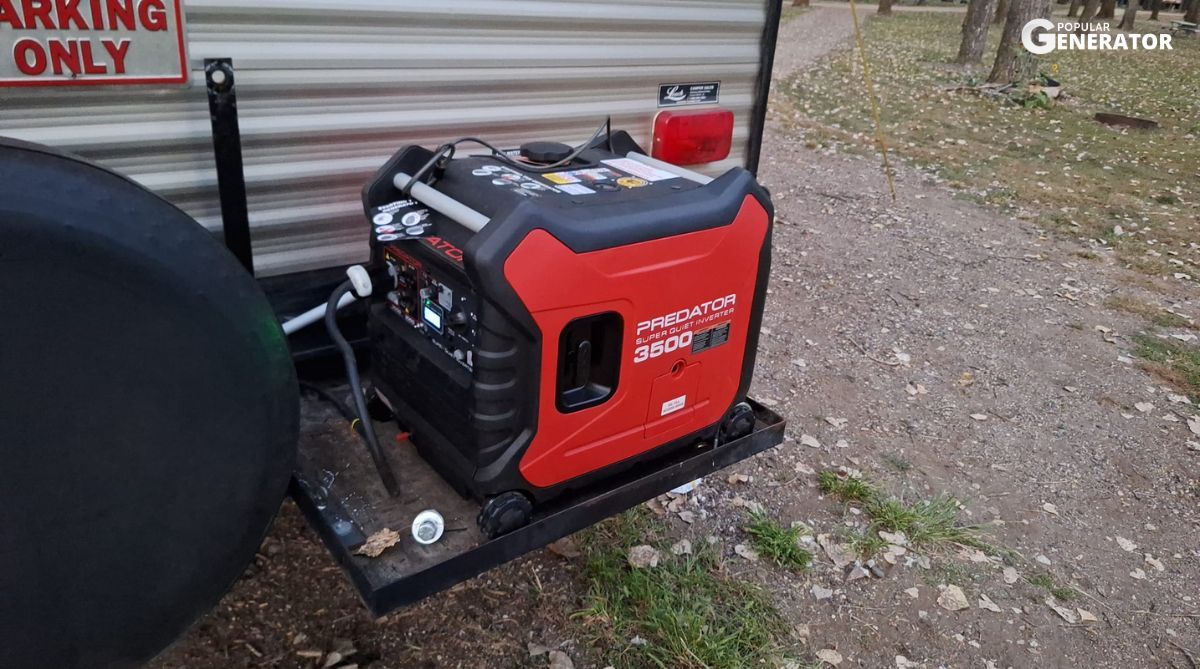So let’s break it down in plain English. I’ll walk you through the wattage requirements, explain startup vs running power, and give you real recommendations based on what I’ve tested myself in the field.
Understanding Refrigerator Power Needs
Refrigerators don’t draw a constant amount of power. They cycle on and off, and they use a surge of power when the compressor kicks in. That’s the startup wattage or surge wattage, and it’s critical to size your generator with that in mind.
-
Typical refrigerator running wattage: 100 to 800 watts
-
Startup (surge) wattage: 800 to 2,000 watts
Here’s the rule of thumb:
Most modern full-size refrigerators require about 1,200 to 1,500 starting watts and around 150 to 400 running watts.
Generator Size Guide (Based on Real Use)
Here’s a basic idea of what size generator you need depending on the type of fridge:
| Refrigerator Type | Running Watts | Surge Watts | Recommended Generator |
|---|---|---|---|
| Mini fridge (1.7–4.5 cu ft) | 100–200 | 300-600 | 1,000W inverter |
| Standard top freezer (16–20 cu ft) | 150–400 | 1,200-1,500 | 2,000W inverter |
| Large side-by-side (22+ cu ft) | 400–600 | 1,500-2,000 | 3,000W generator |
| Commercial refrigerator | 600+ | 2,000+ | 4,000W+ generator |
I’ve personally run my 18 cu ft Whirlpool fridge using a Honda EU2200i, and it worked just fine. But I made sure nothing else was pulling juice at the same time. The moment you plug in something else (like a microwave or window A/C), you’ll need more headroom.
My Real-World Setup (and Lessons Learned)
When I first tested my fridge during an outage, I used a 2,000W inverter generator. It handled the startup surge well, but I noticed something interesting, if I had a long extension cord or shared the power with other appliances, the generator would sometimes struggle. It didn’t shut down, but I could hear it bog down during compressor startup.

Later on, I upgraded to a 3,500-watt dual-fuel generator, and let me tell you that was overkill for just the fridge, but it gave me breathing room to also run my lights, modem, and a couple of fans. Plus, I switched to propane, so I didn’t have to mess with ethanol-laced gas going stale.
My advice? If you only want to run a fridge, a quality 2,000W inverter generator will usually do the trick. If you want to plug in more than just your fridge, go with something in the 3,000W range.
Final Tips Before You Buy a Generator for Your Fridge
-
Check the user manual of your refrigerator. It usually lists the wattage or amps required.
-
Use a kill-a-watt meter or similar tool to measure actual running watts if you’re unsure.
-
Go for inverter generators if noise or fuel efficiency matters.
-
Avoid cheap peak-rated units. Focus on rated running watts, not just surge numbers.
Conclusion
So, what size generator do you need to run a refrigerator? At minimum, a 2,000 watt generator is safe for most home fridges. For more flexibility or larger appliances, look at 3,000 - 3,500 watt units.
Don’t just buy the smallest one you think will work. Build in a buffer, especially if you’re dealing with summer heat, longer outages, or you want to power a few extra things.
I’ve been through enough storm seasons to know: when the lights go out, you want something that just works. No sputtering. No guessing. Just cold food and peace of mind.










